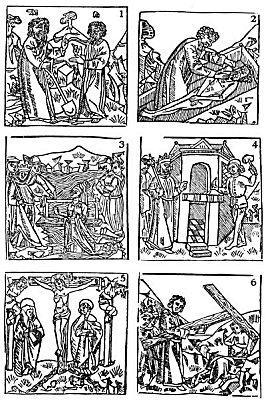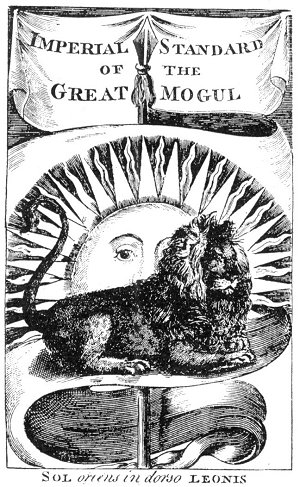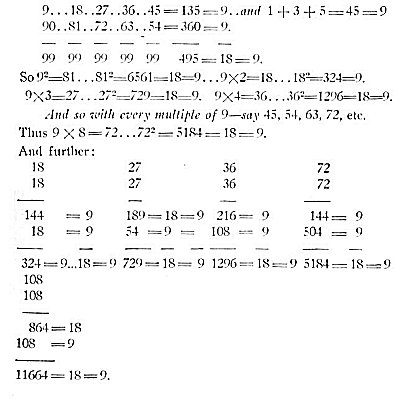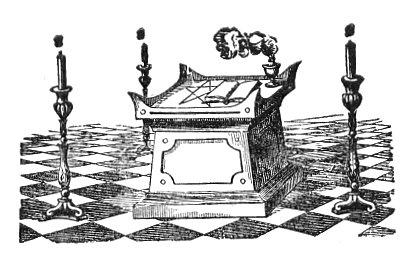Our explanation of the myth may be of little value to students of symbology, and yet we believe that the interpretation of the primitive serpent-worship as given by the initiates is the correct one. In Vol. i., p. 10, we quote from the serpent Mantra, in the Aytareya-Brahmana, a passage which speaks of the earth as the Sarpa Rajni, the Queen of the Serpents, and “the mother of all that moves.” These expressions refer to the fact that before our globe had become egg-shaped or round it was a long trail of cosmic dust or fire-mist, moving and writhing like a serpent. This, say the explanations, was the Spirit of God moving on the chaos until its breath had incubated cosmic matter and made it assume the annular shape of a serpent with its tail in its mouth — emblem of eternity
Page 490
in its spiritual and of our world in its physical sense. According to the notions of the oldest philosophers, as we have shown in the preceding chapter, the earth, serpent-like, casts off its skin and appears after every minor pralaya in a rejuvenated state, and after the great pralaya resurrects or evolves again from its subjective into objective existence. Like the serpent, it not only “puts off its old age,” says Sanchoniathon, “but increases in size and strength.” This is why not only Serapis, and later, Jesus, were represented by a great serpent, but even why, in our own century, big snakes are kept with sacred care in Moslem mosques; for instance, in that of Cairo. In Upper Egypt a famous saint is said to appear under the form of a large serpent; and in India in some children’s cradles a pair of serpents, male and female, are reared with the infant, and snakes are often kept in houses, as they are thought to bring (a magnetic aura of) wisdom, health, and good luck. They are the progeny of Sarpa Rajni, the earth, and endowed with all her virtues.
In the Hindu mythology Vasaki, the Great Dragon, pours forth upon Durga, from his mouth, a poisonous fluid which overspreads the ground, but her consort Siva caused the earth to open her mouth and swallow it.
Thus the mystic drama of the celestial virgin pursued by the dragon seeking to devour her child, was not only depicted in the constellations of heaven, as has been mentioned, but was represented in the secret worship of the temples. It was the mystery of the god Sol, and inscribed on a black image of Isis.The Divine Boy was chased by the cruel Typhon. In an Egyptian legend the Dragon is said to pursue Thuesis (Isis) while she is endeavoring to protect her son.Ovid describes Dione (the consort of the original Pelasgian Zeus, and mother of Venus) as flying from Typhon to the Euphrates, thus identifying the myth as belonging to all the countries where the Mysteries were celebrated. Virgil sings the victory:
“Hail, dear child of gods, great son of Jove!Receive the honors great; the time is at hand;The Serpent will die!”
Albertus Magnus, himself an alchemist and student of occult science, as well as a bishop of the Roman Catholic Church, in his enthusiasm for astrology, declared that the zodiacal sign of the celestial virgin rises above the horizon on the twenty-fifth of December, at the moment assigned by the Church for the birth of the Saviour.
Page 491
The sign and myth of the mother and child were known thousands of years before the Christian era. The drama of the Mysteries of Demeter represents Persephoneia, her daughter, as carried away by Pluto or Hades into the world of the dead; and when the mother finally discovers her there, she has been installed as queen of the realm of Darkness. This myth was transcribed by the Church into the legend of St. Anna going in quest of her daughter Mary, who has been conveyed by Joseph into Egypt. Persephone is depicted with two ears of wheat in her hand; so is Mary in the old pictures; so was the Celestial Virgin of the constellation. Albumazar the Arabian indicates the identity of the several myths as follows:

Moe is the founder of GnosticWarrior.com. He is a father, husband, author, martial arts black belt, and an expert in Gnosticism, the occult, and esotericism.





